Parsi Theatre in Bombay
(Note: The names Bombay and Mumbai have both been used in this story as it spans a long period of time)
In the year 1853 the ‘Parsi Dramatic Corp’ staged a play named Rustam Zabuli and Zohrab at the Grant Road Theatre in Bombay. It was an adaptation of the 10th century Persian epic Shahnameh, a tragic story of the heroes, Rustam and his son, Sohrab, by the Persian poet Ferdowsi. This marked the beginning of Parsi theatre in the city, which went on to have a great impact in the field of entertainment, including the Hindi film industry.
The staging of this play had occurred nearly 70 years after the first theatre had made its appearance in the city. However, in the intervening period, things had happened which gave impetus to the Parsi community in Bombay to make a foray into this area.
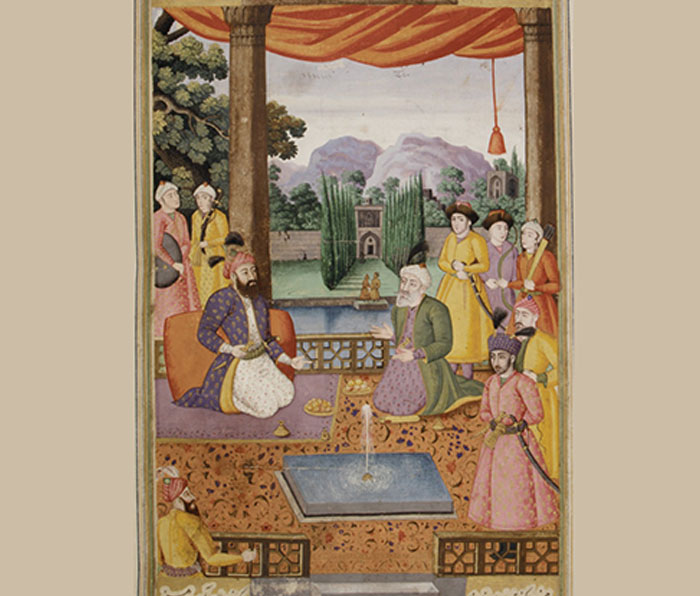
A scene from the ancient Persian text Shahnameh
Source: Wikimedia Commons
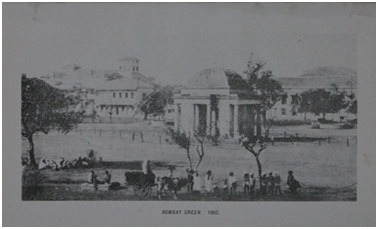
Bombay Green in 1860
Source: Wikimedia Commons
Bombay had seen periodic performances by European production houses at Bombay Theatre, the first theatre to come up in 1776, in the Bombay Green area.
While this theatre had been supported by Mountstuart Elphinstone (the Governor of Bombay), it went into a debt after Elphinstone’s departure. Things went downhill to such an extent that in 1834 it was proposed in a significant meeting of government officials that if the theatre continued to generate losses, it would be converted into a clubhouse.
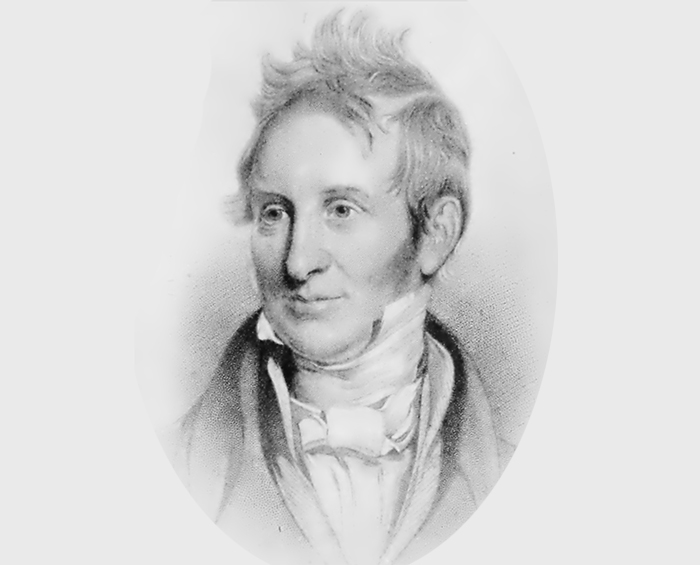
Mountstuart Elphinstone, Governor of Bombay (1819-27)
Source: Wikimedia Commons
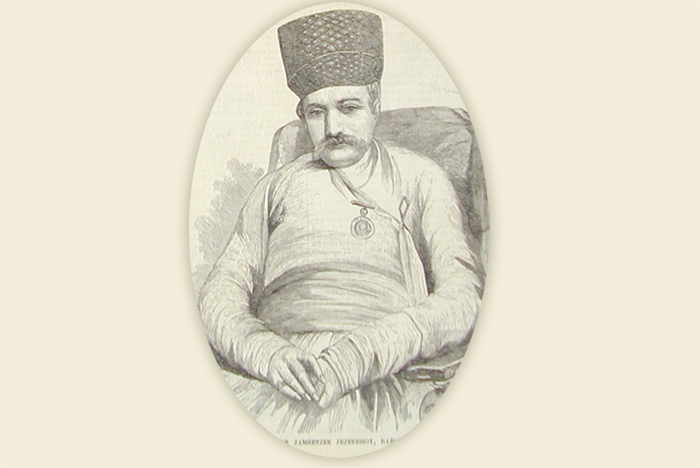
Jamsetjee Jejeebhoy
Source: Wikimedia Commons
It was at this juncture that Jamsetjee Jeejeebhoy, a renowned Parsi merchant and philanthropist, came forward as a saviour. In 1835 he bought the theatre for Rs. 50,000. He paid off all the debts and loans but retained the property owned by the theatre.
The Bombay theatre remained shut for ten years. Subsequently, Jagannath Shankarseth, one of Bombay's leading merchants, donated a plot of land on Grant Road in 1844, where the Grant Road Theatre was built.
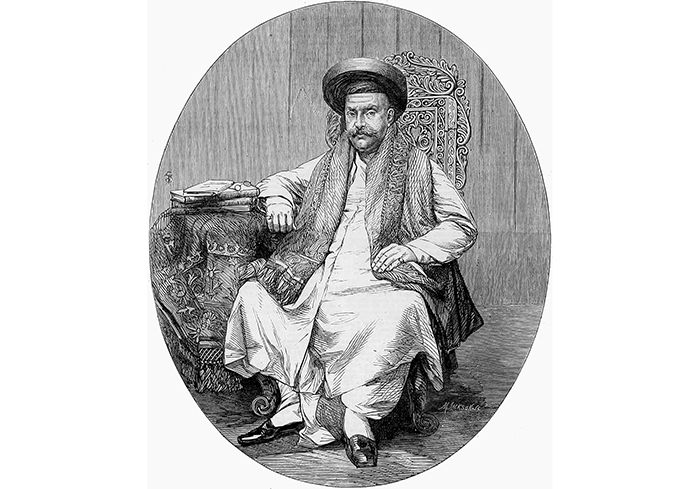
Jagannath Shankarseth
Source: Wikimedia Commons
It was here that for the first time plays produced by English-educated Indians were staged. In 1846, the Khetvadi Theatre came up where the newly formed theatre company called the Hindu Dramatic Corps performed plays, which were in Marathi, Gujarati, and Hindustani languages. This group was much influenced by the Marathi 'Bhave' drama players, a troupe formed in 1842 by the ruler of Sangli, who in turn had seen plays performed by travelling 'Kanarese' players. These theatrical traditions inspired the Parsi community to stage a play of their own.
Rustam Zabuli and Zohrab was rooted in the Persian folklore, as the Parsi community, practising the Zoroastrian faith, had emigrated from Persia to Gujarat. They had adopted the dress and the local language but had maintained their distinct socio-religious identity. Having arrived in Bombay during the late 1600s, the Parsis had established an important mercantile presence in the city. Their wealth and westernisation were other factors which led them to enter the field of theatre. After the success of their first play, the community expanded their repertoire and soon their productions were staged which were marked by cross-cultural adaptations of various mythological and folk traditions of Asian and European origins, in languages such as Gujarati, Hindustani, English and Marathi.
Other companies soon followed. In 1853 the Parsi Natak Mandali was established by Faramjee G. Dalal. It had several Parsi actors and playwrights. Amongst them was the famous D. R. Thudhi, who introduced the substitution of Western instruments with classical Indian string instruments. He also improved the standards of acting and scenic effects in Parsi plays. In 1858, the Indian Theatrical Club was formed, which performed a play titled Nana Saheb, which became immensely popular and the songs from this play were sung in Parsi homes.
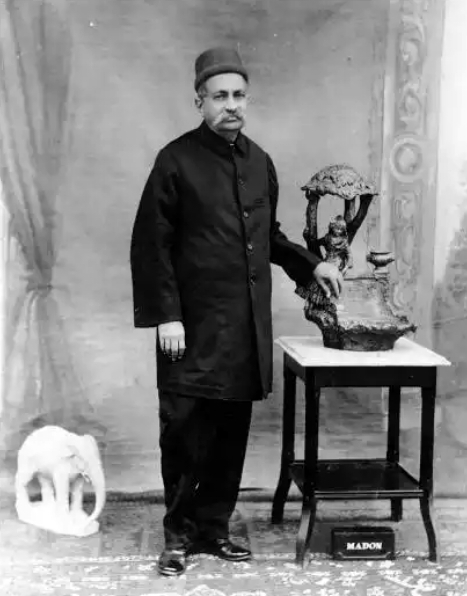
Jamshedji Framji Madan
Source: Wikimedia Commons
Khawasji Khatau, known as the ‘Irwing of India’, established in 1877 the Alfred Theatrical Company which was known for staging Shakespearean adaptations. Gorakhadhanda (“A Labyrinth”), an adaptation of The Comedy of Errors by Narayana Betab in 1912 and Sher-Dil (The Tiger-Hearted), an adaptation of Othello by Najar Dehlvi in 1918 were extremely successful.
The Parsi Elphinstone Dramatic Club was founded by a Parsi student Kunvarji Sohrabji Nazir at the Elphinstone College. The Club performed plays in English at the college on weekdays and on Saturday nights at the Grant Road Theatre. This club mainly performed adaptations of Shakespeare's plays because the majority of Parsi youth were educated by British teachers and were familiar with Shakespeare. Plays like Jedia Bhai — Adhle Beheru Kutavu (adapted from Comedy of Errors) and Kasrivaj na Karstan (adapted from Othello) published by Nanabhai Rustamji Ranina gained popularity in 1865. This club, which later came to be known as the Elphinstone Theatre Company, was taken over by Jamshedji Framji Madan in 1883. Madan, who joined the Club as a prop boy in 1868, went on to become a renowned producer and distributor of films and plays.
Parsi theatre came to be known for its powerful acting. It was further boosted by the fact that the Parsi proprietors would generously spend money on stage settings. They adopted the European theatre traditions such as the use of the proscenium arch with its backdrop and curtains, western musical instruments, and western devices and props. They got artists from Europe to paint the scenery, purchased stage machinery from England, and advertised 'Transformation Scenes' or 'Dissolving Views' through English style playbills. During the shows spectators were given an 'opera book' containing the lyrics of the songs. Some of the actors were even sent to England to learn the acting styles. They also adopted the English practice of staging small farces at the end of the main play.
The Parsi theatre is also credited with the introduction of women to theatre. The first female actress to make an appearance on stage was Gohar, who was brought into this domain by Khatau. Mary Fenton, the daughter of an English army officer, also rose to prominence with her role as a Parsi heroine in many plays. Another actress named Munnibai excelled in domestic tragedies.

Mary Fenton
Source: Wikimedia Commons
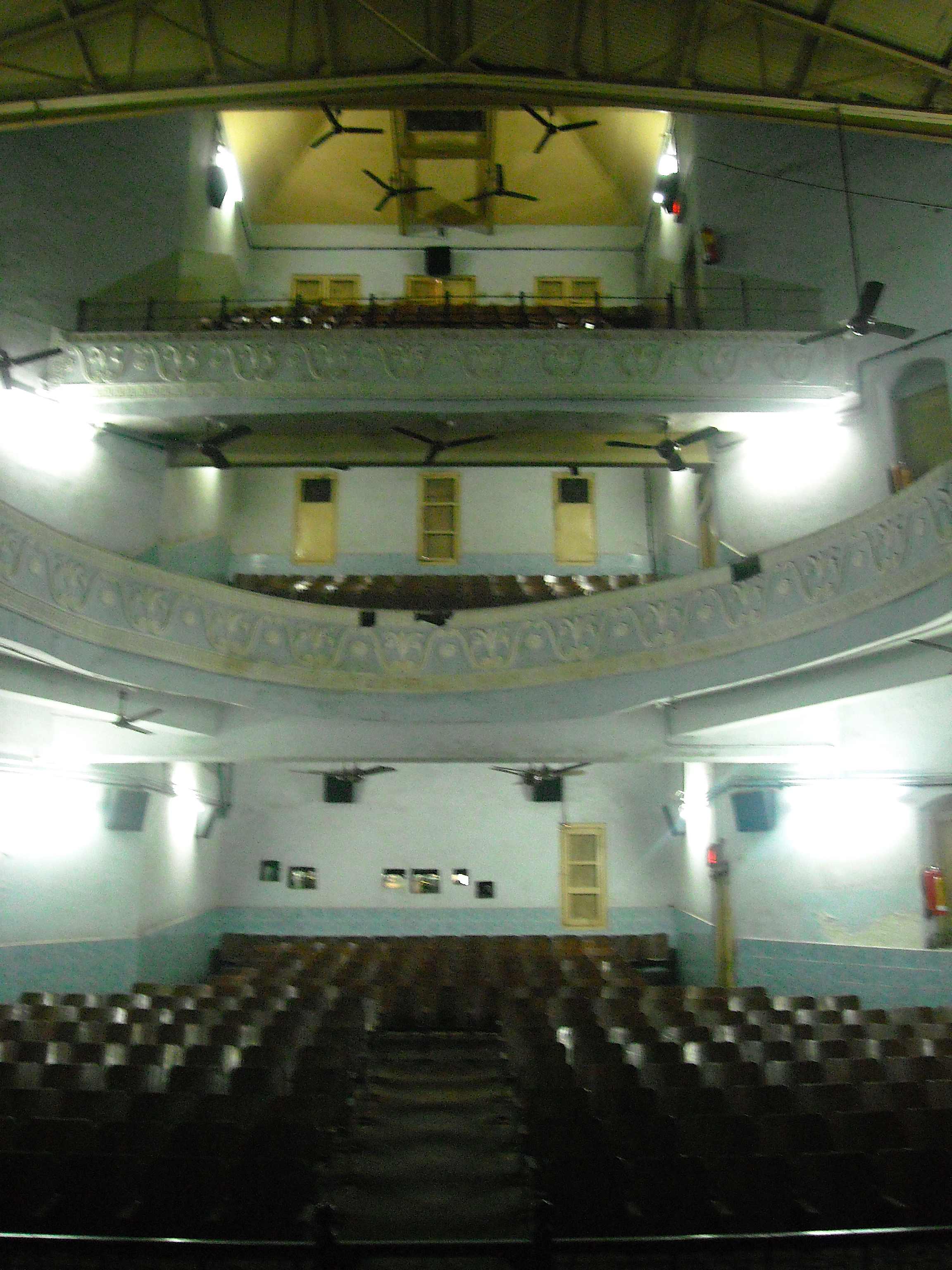
Edward theatre in 2017
Source: Wikimedia Commons
The average salaries drawn by native actors ranged between Rs. 5 to Rs. 50 per month with board and lodging, with leading actors being paid up to Rs. 300 per month. The theatres made an income of Rs. 1,000. Performances took place on Wednesday and Saturday nights and Sunday afternoons. The huge patronage that these plays received was due to the existence of new commercial groups, working classes, professionals, and salaried people in Bombay which had emerged under the English rule. These people were willing to spend money on entertainment and were on the lookout for new forms of entertainment.
The journey of the Parsi theatre wasn't a smooth one. The main obstacle was the dearth of theatre houses in Bombay. Sometimes the Grant Road Theatre was rented out to one particular theatrical company for weeks at a time. To overcome this obstacle, Parsi theatrical companies went on tours, thus developing traveling theatre groups that could perform their plays for longer durations. It was during this period that Parsi theatre spread out to other parts of India including Gujarat, Bengal, and Tamil Nadu. The Victoria Theatrical Company, founded by a famous theatre artist, Khurshedji Balliwala, even travelled to Rangoon, Singapore, and even England.
Nonetheless, several theatre halls came up towards the end of the eighteenth century and the beginning of the nineteenth century. Notable amongst these are the Edward Theatre, the Gaiety Theatre, the Victoria Theatre, and the Empire Theatre. The Gaiety theatre was granted a ten year renewal of its lease in 1880. However, today, most of these theatres have either been destroyed or converted to cinema houses.
The English and Gujarati newspapers published at the time provided support and ensured the sustenance of the Parsi Theatre. Advertisements, notices about venue shifts, ticket prices and reviews were published in The Bombay Times, The Bombay Telegraph, The Bombay Courier, The British Indian Gentleman's Gazette, Kaiser-i-Hind, and Rast Goftar.
Despite its ups and downs, Parsi theatre has sustained and richly contributed to the theatre culture of Mumbai. Parsi theatre gave rise to notable playwrights like Rustomji Nanabhai Ranina, who also wrote children's books and composed a trilingual dictionary and Navrojji Kabraji who was also the proprietor and editor of Rast Goftar (a Parsi newspaper). One of the most significant playwrights, Adi Pherozeshah Marzban (1914-1987), is considered responsible for the visible shift in Parsi theatre in modern times (1950-1960). To adapt to the changing culture of Mumbai, he broke the stereotype of family melodramas and historical myths and portrayed themes that were in tandem with contemporary culture. His first play, Ardhi Raate Aafat, was a thriller (an emerging genre at that time). His comedies revolved around socially relevant subjects like the dynamics of a dysfunctional family (Piroja Bhavan). He also trained young actor-directors like Homi Tawadia, Burjor Patel, Phiroz Antia, and Ruby Patel who carried the Parsi theatre tradition forward.

Navrojji Kabraji
Source: Wikimedia Commons

Sohrab Modi
Source: Wikimedia Commons
The most enduring legacy of Parsi theatre is its tremendous impact on Bollywood, the Hindi film industry based in Mumbai. At the beginning of its journey, it imbibed the oriental and mythological subjects, the costumes, and dialogues that characterized a majority of Parsi plays. The Parsi drama companies transformed themselves into early film companies. Financiers, managers, and actors were common to both. Sohrab Modi and his brother Rustom recast their theatre group into the Stage Film Company.
They filmed their popular play Khoon ka Khoon (based on Hamlet), which had 17 songs, and characters bearing Indian names. India's first full-length silent feature film Raja Harishchandra is an adaptation of the Parsi play with the same name, which ran for over 4,000 shows.
The film industry also incorporated the comic narratives that revolved around mistaken identities and highly exaggerated plots that were evident in popular Parsi plays like Shirin Farhad. Writers of Parsi theatre such as Agha Hashr Kashmiri switched over easily to writing screenplays for films. Even when films were not based on plays, the actors had had their initial training in theatre. However, it was the intangibles of the Parsi theatre that had the greatest influence on the Indian film industry. These were the stylistic elements such as declamatory theatrical performances, the progression of the narrative through song and dance sequences, melodrama, disguise, and plot reversals. The reliance on music and dance that forms the essence of Bollywood movies even today has its origins in Parsi theatre. Bollywood films, just like the Parsi plays in the past, cater to Pan-Indian audiences and have helped create the idea of a national audience.

A scene from the movie Raja Harishchandra (1913)
Source: Wikimedia Commons
 Government of Indiaa
Government of Indiaa

 Recognizing the ongoing need to position itself for the digital future, Indian Culture is an initiative by the Ministry of Culture. A platform that hosts data of cultural relevance from various repositories and institutions all over India.
Recognizing the ongoing need to position itself for the digital future, Indian Culture is an initiative by the Ministry of Culture. A platform that hosts data of cultural relevance from various repositories and institutions all over India.
